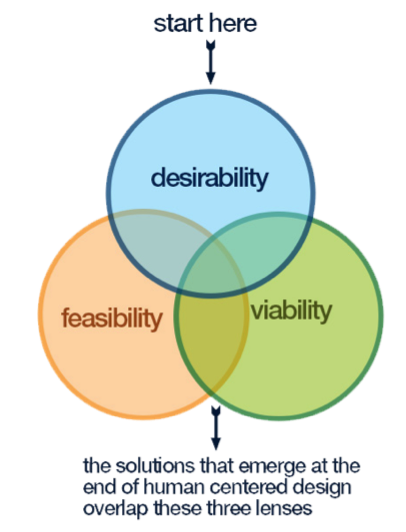Human Centered Design Methodology
From Learning and training wiki
|
Human Centered Design (HCD) is a process used to create new solutions for the world. These solutions can include products, services, environments, organizations and multiple modes of interaction. Human-Centered Design is used to overcome the poor design of software products. By emphasizing the needs and abilities of those who are to use the software, it improves the usability and understandability of products. The reason this process is called “human-centered” is because, as opposed to Activity-Centered Design, it starts with the people we are designing for. In other words it begins by examining the needs, dreams, and behaviors of the people through, what some call, the Desirability Lens.[1]
The process of human-Centered Design starts with a specific Design Challenge and goes through three main phases[2]:
• Can overcome the poor design of products. • Improves usability and understandability of products. • Fewer errors during usage of products. • Faster learning times.
• Can lead to too specialized products, making its less appropriate for others. • The focus upon humans may detract from supporting the activities themselves. • Too much attention to the needs of the users can lead to a lack of cohesion and added complexity in the design.
|
| Find below some additional resources. |
| Link | Content |
|---|---|
| Human Centered Design | Human Centered Design |
| Human Centered Design | Human Centered Design Methodology: and example of application with UAV's mission |
References
- ↑ IDEO “Human Centered Design Toolkit” http://www.ideo.com/work/human-centered-design-toolkit
- ↑ HCD Connect, “HCD Toolkit 2nd Edition” https://hcd-connect-production.s3.amazonaws.com/toolkit/en/download/ideo_hcd_toolkit_final_cc_superlr.pdf
- ↑ http://jnd.org/dn.mss/human-centered_design_considered_harmful.html
- ↑ http://jnd.org/dn.mss/human-centered_design_considered_harmful.html
